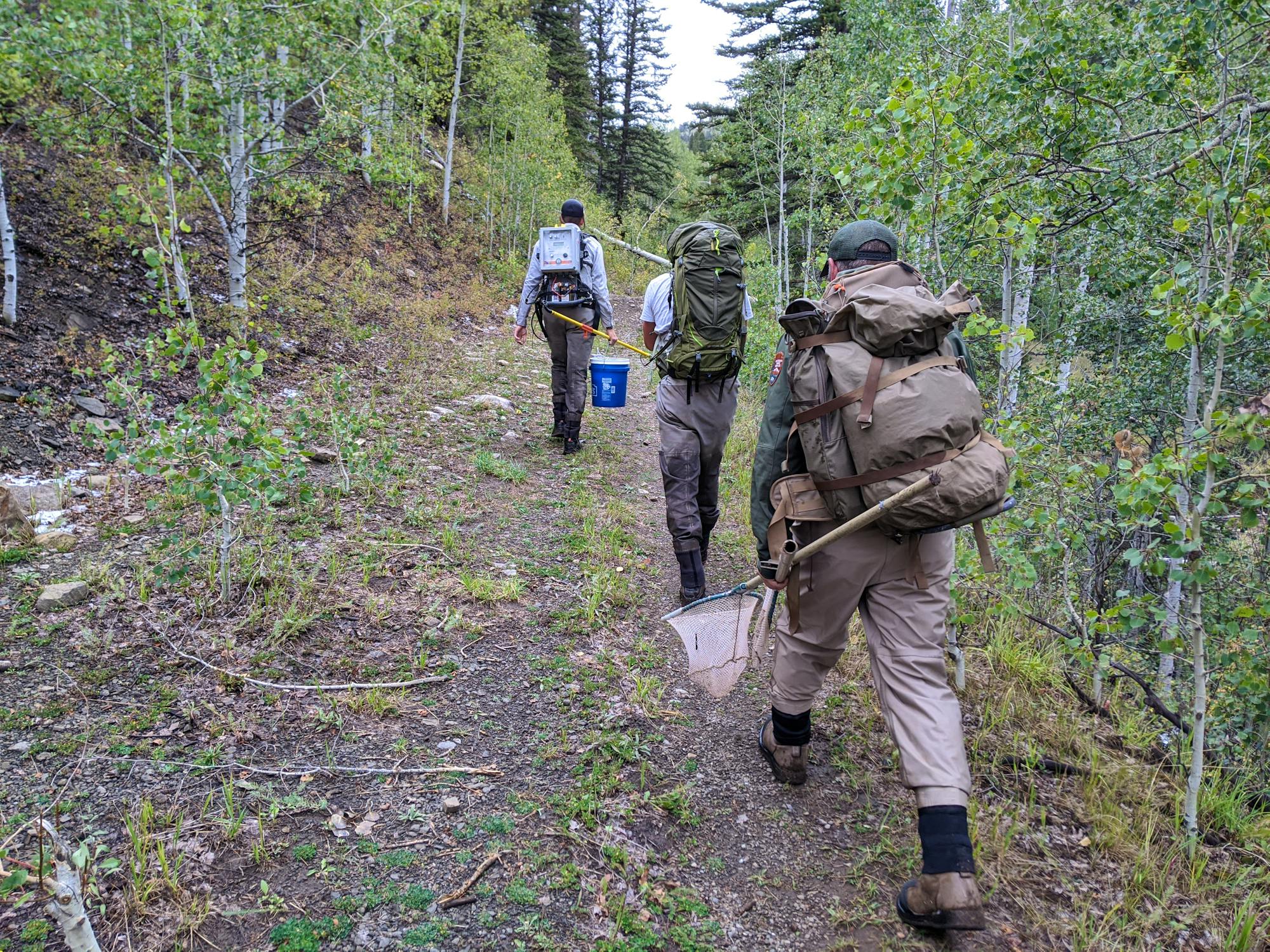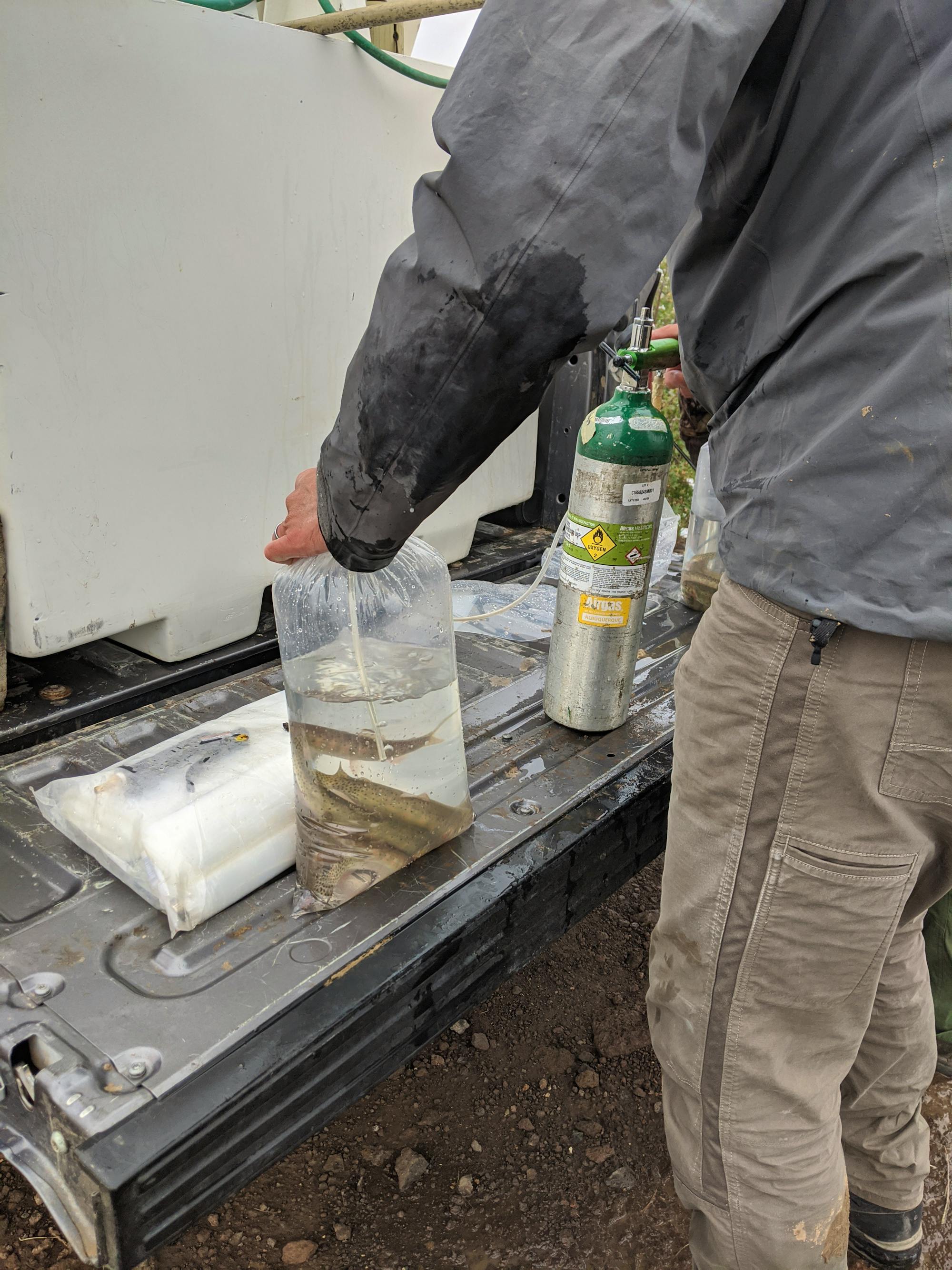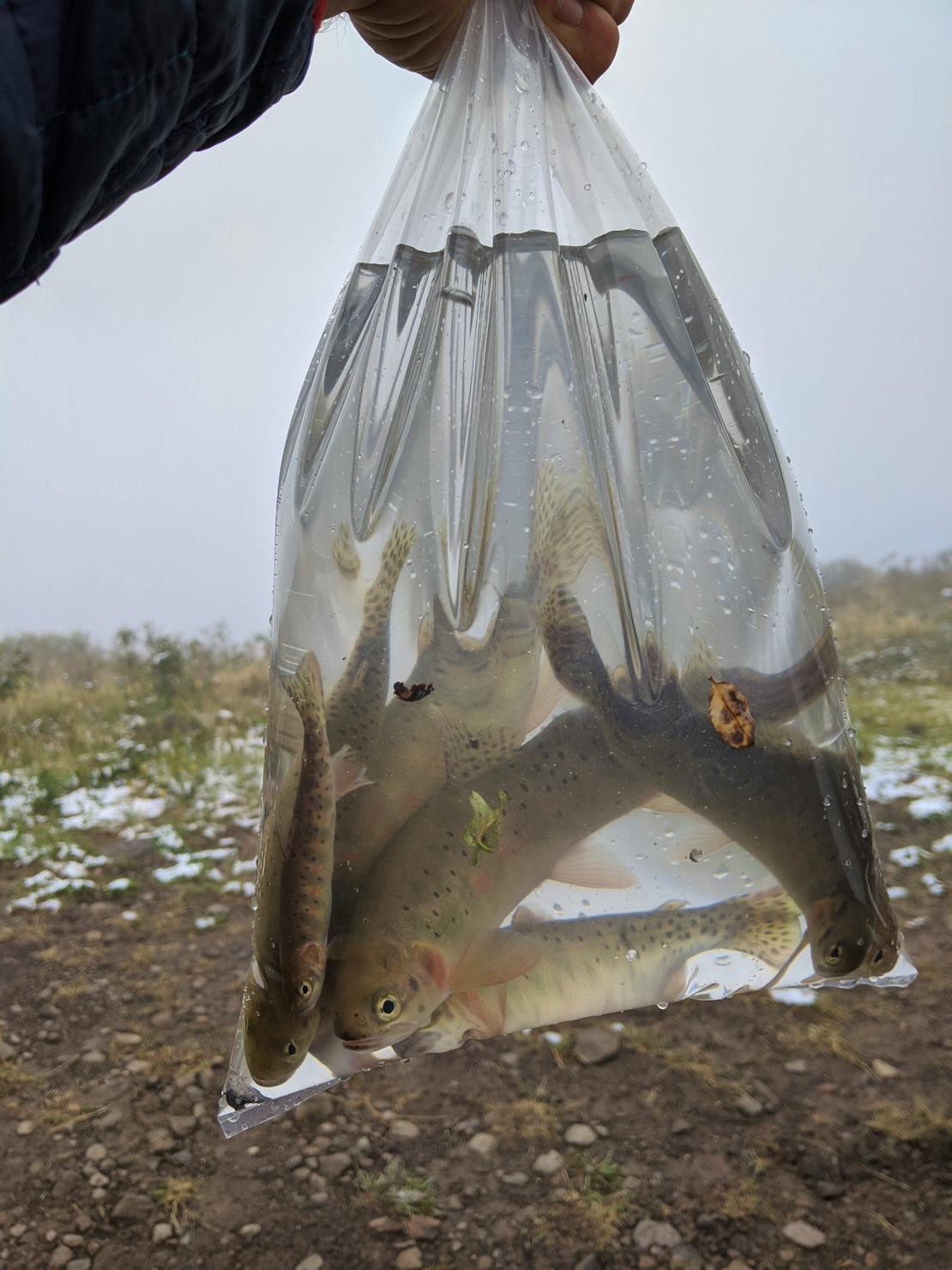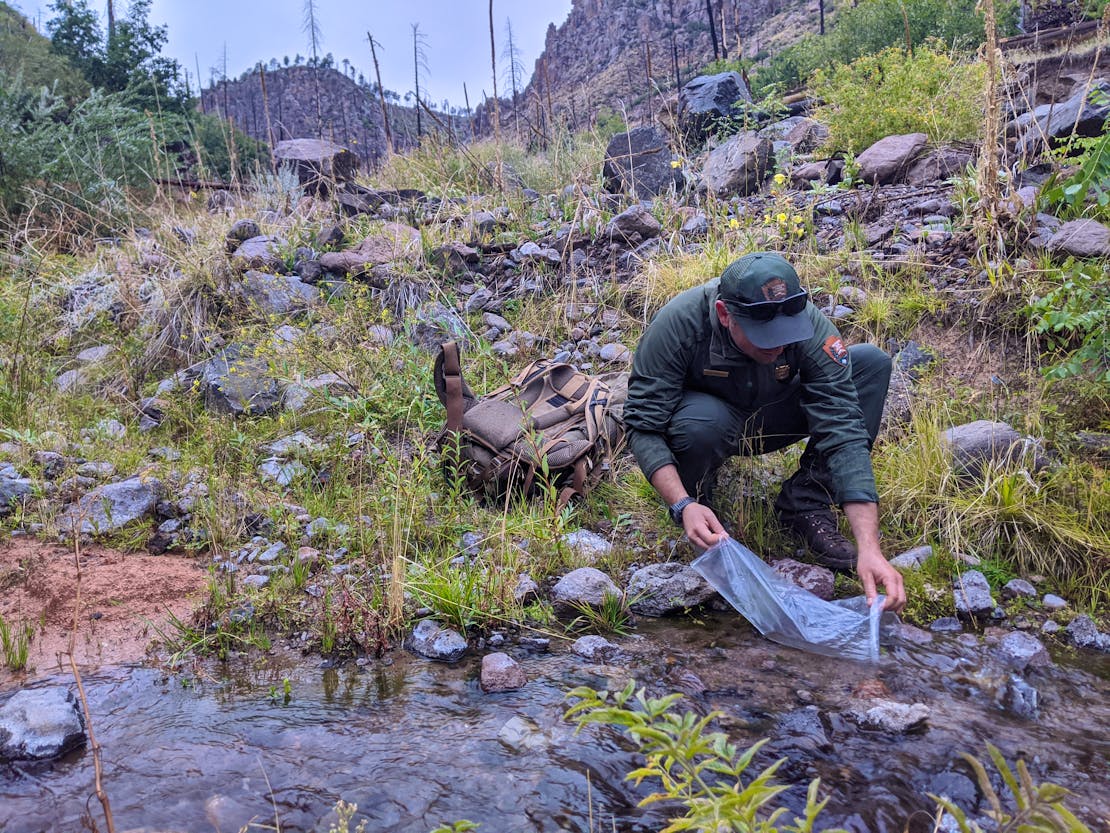Although it’s the state fish of New Mexico, the Rio Grande cutthroat trout is imperiled. Native to parts of southern Colorado and northern New Mexico, just 6% of its historical habitat and faces numerous threats including competition with non-native species like rainbow, brown and brook trout and impacts associated with climate change like drought, smaller snowpacks and increased unnatural wildfire behavior.
The good news is that robust efforts led by New Mexico Department of Game and Fish, Colorado Parks and Wildlife and other land and wildlife managers have sought to recover this native salmonid species.
For our part, Defenders works to improve habitat by promoting the recovery of keystone species like beaver, engaging in on-the-ground restoration projects, conducting surveys to improve connectivity within aquatic and riparian systems and advocating for policies that will increase funding and resources for these activities. And every once in a while, an opportunity arises to restore the species to formerly occupied habitats.
Earlier this month, I joined a couple of staff from New Mexico Department of Game and Fish and Bandelier National Monument to reintroduce Rio Grande cutthroat trout to a formerly occupied stream within the monument. We remained as socially distanced as possible and thanks to some early season snow, masks were worn not just for safety, but warmth as well.



Our day started in the Carson National Forest near Taos on a small tributary stream with a relic cutthroat population. Using an electroshocker, our small team collected 46 fish that we first put in buckets and then a large cooler with additional oxygen pumped into the water to ensure the fish would survive the journey.
From there, we caravanned south to the edge of Bandelier National Monument, which is most well-known for its ancestral Puebloan homes and artifacts. In 1996, the Dome Fire burned more than 16,000 acres in Bandelier and neighboring portions of the Santa Fe National Forest. The resulting floods wiped the Rio Capulin clean of non-native fish were introduced to the stream over the previous decades. In 2006, biologists reintroduced native cutthroats, but just five years later, Las Conchas Fire, the biggest in the state’s history at that time, burned through the area again, wiping out that nascent population.
Over the past 10 years, the area has started to slowly recover, and following the reintroduction of cutthroats to a neighboring stream in Bandelier a few years earlier, this year managers from Bandelier wanted to bring them back to Rio Capulin.
From where we parked, we hiked two miles into the canyon, each of us carrying plastic bags filled with fish. We reached the water, and all 46 fish survived the journey, fiercely swimming away from us to explore their new home.
Given the varied threats it faces, Rio Grande cutthroat trout face an uphill battle, but thanks to efforts like these, there is hope for the species.








